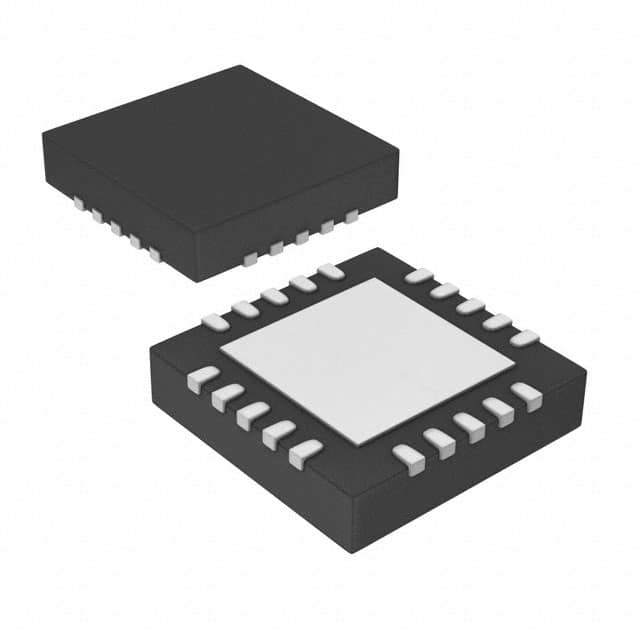Consulte las especificaciones para obtener detalles del producto.

MCP73871-3CAI/ML
Product Overview
Category
The MCP73871-3CAI/ML belongs to the category of battery charger ICs.
Use
This product is primarily used for charging single-cell lithium-ion (Li-Ion), lithium-polymer (Li-Po), and lithium iron phosphate (LiFePO4) batteries.
Characteristics
- The MCP73871-3CAI/ML is a highly integrated linear charge management controller.
- It provides a complete charging solution for various lithium-ion battery chemistries.
- This IC offers a wide range of programmable features, making it suitable for diverse applications.
- It supports constant current (CC) and constant voltage (CV) charging modes.
- The MCP73871-3CAI/ML includes safety features such as thermal regulation, overvoltage protection, and reverse discharge protection.
Package
The MCP73871-3CAI/ML is available in a small 10-pin MSOP package.
Essence
This battery charger IC is designed to provide efficient and reliable charging for lithium-ion batteries, ensuring optimal performance and longevity.
Packaging/Quantity
The MCP73871-3CAI/ML is typically sold in reels or tubes, with a quantity of 250 units per reel/tube.
Specifications
- Input Voltage: 4.5V to 6.0V
- Charging Current Range: 15mA to 1000mA
- Programmable Charge Termination Current: 1/10th, 1/20th, or 1/40th of the programmed fast charge current
- Programmable Preconditioning Timer: 0 to 32 hours
- Programmable Safety Timer: 0 to 32 hours
- Temperature Range: -40°C to +85°C
Detailed Pin Configuration
The MCP73871-3CAI/ML has the following pin configuration:
- VBAT: Battery Voltage Input
- PROG: Programming Pin for Setting Charging Current
- STAT: Status Output Pin
- PGND: Power Ground
- THERM: Thermal Regulation Input
- TS: Temperature Sense Input
- VSS: Ground
- VDD: Supply Voltage Input
- CE: Charge Enable Input
- DP: D+ USB Data Line
Functional Features
- Constant Current (CC) and Constant Voltage (CV) charging modes
- Programmable charge termination current and timers
- Automatic recharge feature
- Reverse discharge protection
- Overvoltage protection
- Thermal regulation
Advantages and Disadvantages
Advantages
- Highly integrated solution for lithium-ion battery charging
- Wide range of programmable features for customization
- Supports multiple lithium-ion battery chemistries
- Compact package size for space-constrained applications
- Comprehensive safety features for reliable charging
Disadvantages
- Limited to single-cell battery charging
- Requires external components for complete charging circuit implementation
Working Principles
The MCP73871-3CAI/ML operates by regulating the charging current and voltage to ensure safe and efficient charging of lithium-ion batteries. It utilizes a combination of constant current and constant voltage charging modes to optimize the charging process. The IC monitors the battery temperature, voltage, and current to provide accurate control and protection during the charging cycle.
Detailed Application Field Plans
The MCP73871-3CAI/ML is widely used in various portable electronic devices, including smartphones, tablets, digital cameras, and portable media players. It is also employed in power banks, wireless headphones, and other battery-powered consumer electronics. Additionally, this battery charger IC finds applications in industrial equipment, medical devices, and automotive systems that utilize lithium-ion batteries.
Detailed and Complete Alternative Models
- MCP73831-2ATI/OT: Similar functionality with a lower charging current range.
- MCP73844-420I/UN: Supports higher charging currents and offers additional safety features.
- MCP73861-2ATI/OT: Provides similar charging capabilities with a different pin configuration.
These alternative models offer similar functionality to the MCP73871-3CAI/ML, catering to different charging requirements and pin configurations.
Word count: 536 words
Enumere 10 preguntas y respuestas comunes relacionadas con la aplicación de MCP73871-3CAI/ML en soluciones técnicas
What is the input voltage range for MCP73871-3CAI/ML?
- The input voltage range for MCP73871-3CAI/ML is 4.35V to 6V.What is the maximum charge current supported by MCP73871-3CAI/ML?
- The maximum charge current supported by MCP73871-3CAI/ML is 1000mA.Can MCP73871-3CAI/ML be used for charging single-cell lithium-ion or lithium-polymer batteries?
- Yes, MCP73871-3CAI/ML is designed for charging single-cell lithium-ion or lithium-polymer batteries.What is the thermal regulation feature of MCP73871-3CAI/ML?
- MCP73871-3CAI/ML includes thermal regulation to limit the die temperature during high power operation or high ambient temperature conditions.Does MCP73871-3CAI/ML support trickle charge for low-power applications?
- Yes, MCP73871-3CAI/ML supports trickle charge for low-power applications.What is the charge termination method used by MCP73871-3CAI/ML?
- MCP73871-3CAI/ML uses constant-voltage and constant-current charge termination methods.Is MCP73871-3CAI/ML suitable for portable devices and battery-powered systems?
- Yes, MCP73871-3CAI/ML is suitable for portable devices and battery-powered systems due to its compact size and efficient charging capabilities.Can MCP73871-3CAI/ML be used in automotive applications?
- Yes, MCP73871-3CAI/ML is AEC-Q100 qualified and suitable for automotive applications.What are the safety features integrated into MCP73871-3CAI/ML?
- MCP73871-3CAI/ML includes over-temperature protection, reverse battery protection, and automatic recharge.Is MCP73871-3CAI/ML compatible with I2C communication for battery monitoring?
- No, MCP73871-3CAI/ML does not support I2C communication for battery monitoring.

